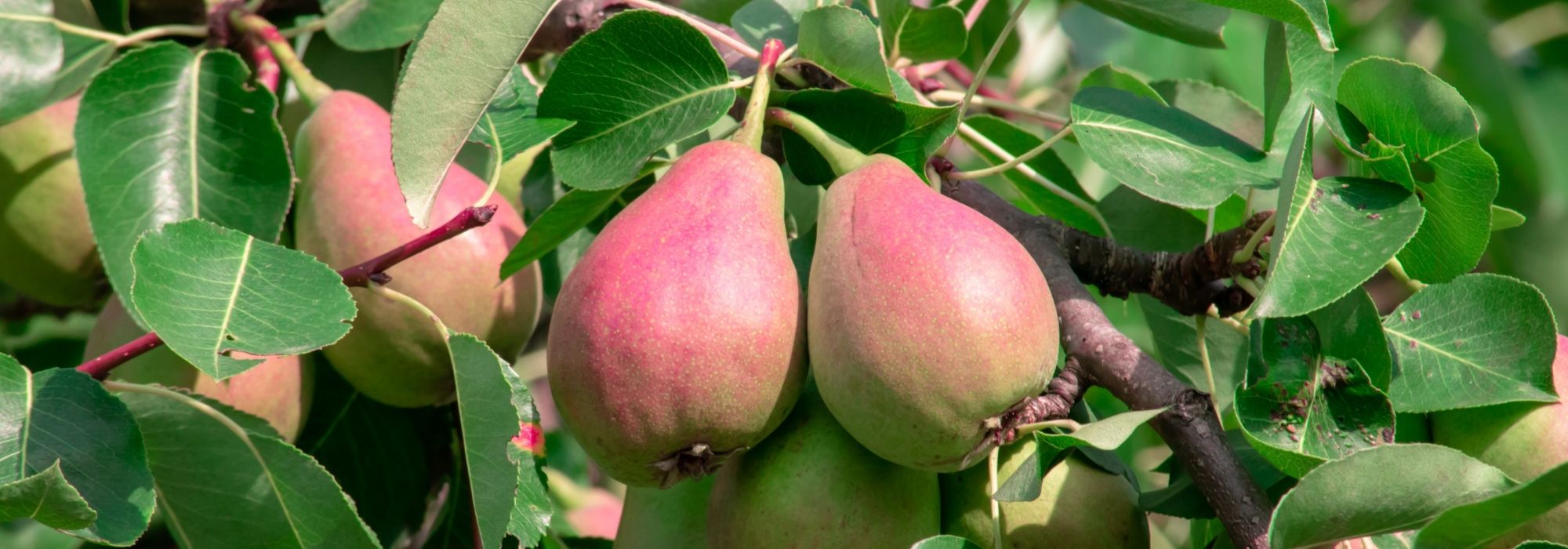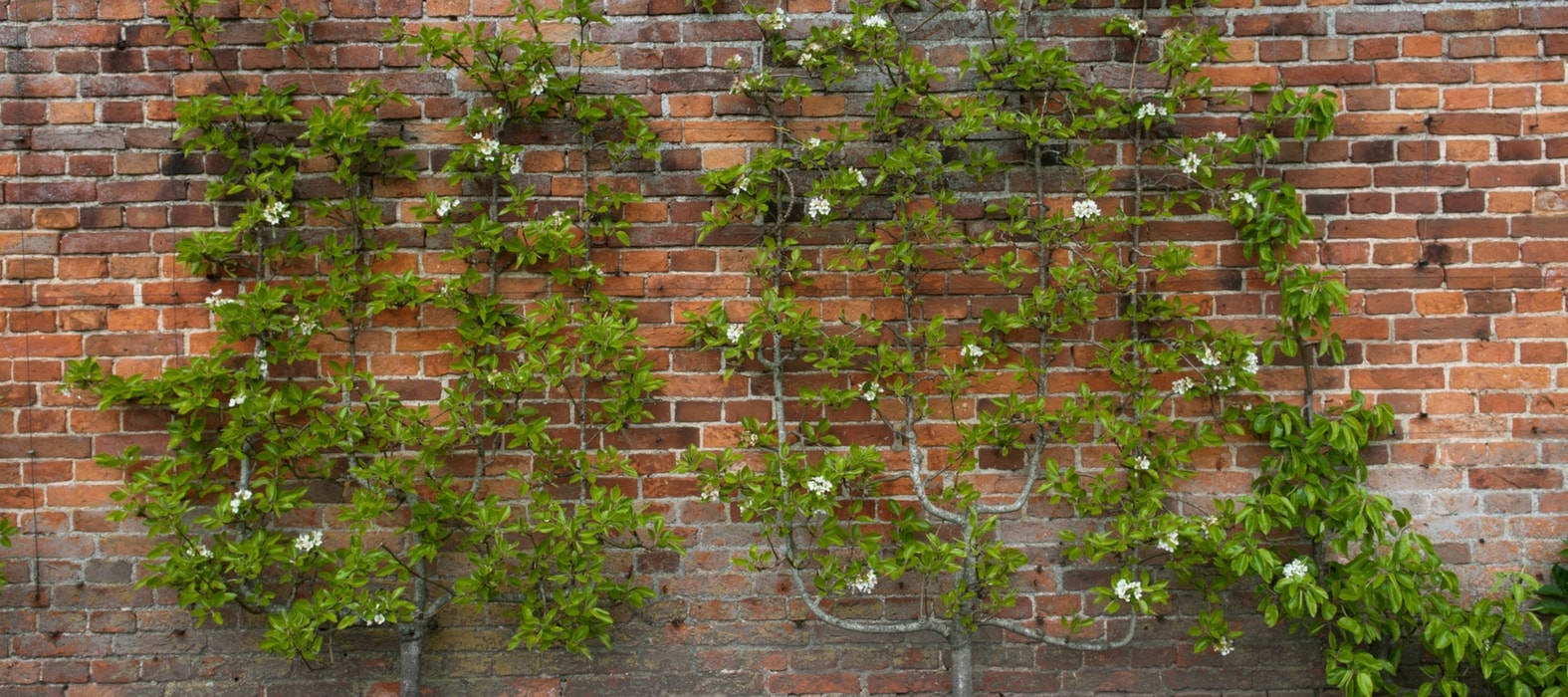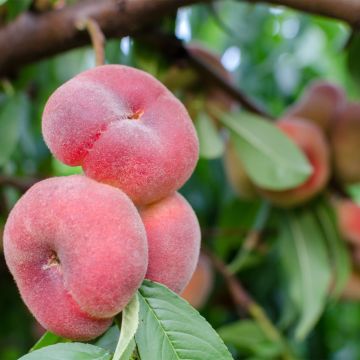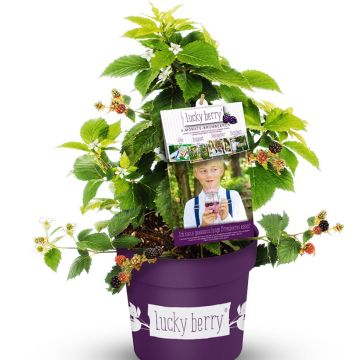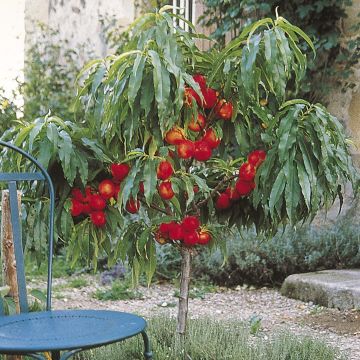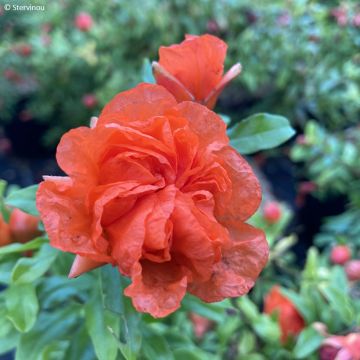

Pyrus communis Delbard d'Automne - Pear Tree


Pyrus communis Delbard d'Automne - Pear Tree
Pyrus communis Delbard d'Automne - Pear Tree
Pyrus communis Delbard d'Automne® Delsanne
Common Pear, European Pear
Special offer!
Receive a €20 voucher for any order over €90 (excluding delivery costs, credit notes, and plastic-free options)!
1- Add your favorite plants to your cart.
2- Once you have reached €90, confirm your order (you can even choose the delivery date!).
3- As soon as your order is shipped, you will receive an email containing your voucher code, valid for 3 months (90 days).
Your voucher is unique and can only be used once, for any order with a minimum value of €20, excluding delivery costs.
Can be combined with other current offers, non-divisible and non-refundable.
Home or relay delivery (depending on size and destination)
Schedule delivery date,
and select date in basket
This plant carries a 6 months recovery warranty
More information
We guarantee the quality of our plants for a full growing cycle, and will replace at our expense any plant that fails to recover under normal climatic and planting conditions.
Description
The Delbard Autumn Dwarf Pear Tree is a perfectly suited miniature tree for small gardens. Although its size is reduced, its fruits are not! It produces large brown-green pears weighing up to 250 grams. Ripe in October, they can be stored until November. Their delicate and juicy flesh is sweet, with a slight acidic note. This small tree will thrive in the sun, preferably sheltered from cold winter winds, in soil close to neutral, remaining moist, as it does not tolerate drought. Hardy, it can be grown almost anywhere.
The Common Pear (Pyrus communis) is a member of the large Rosaceae family, which not only includes the majority of our fruit trees (Apple, Apricot, Cherry, Plum...) but also small fruits (strawberry, blackberry, raspberry...) and, of course, many ornamental genera, shrubs (Cinquefoil, Firethorn, Photinia, Serviceberry, Ninebark...) or trees (Flowering Apple and Cherry, Hawthorn...) and of course the queen of flowers, the Rose! The Common Pear is a tree native to temperate regions of Europe and Western Asia. This species, appreciated for its delicious fruits, has given rise to thousands of cultivars, and more recently, classic varieties have even been developed into dwarf varieties, such as Belle Hélène. The Georges Delbard Nurseries, continuing the work of their creator, regularly bring dwarf fruit trees to the market, which are well adapted to the size of gardens in our time.
Delbard D'Automne is thus an exciting creation, thanks to its compact size that does not prevent it from producing large, tasty fruits. This hybrid results from cross-breeding between Super Comice Delbard, a variety from the same breeder, and Passe Crassane, an old variety dating back to the mid-19th century. It forms a small tree about 1.50 m (5ft) tall or slightly taller, but annual pruning can easily control its growth. This means that even the smallest garden can accommodate it... In April, it blooms with white corymbs that stand out well against the bright green foliage, which is slightly dark. This flowering requires cross-pollination to produce fruits, as this tree is not self-fertile. Therefore, another variety should be planted nearby, such as Conference, Doyenné du Comice or Williams, to obtain fruits. Under these conditions, Delbard Autumn produces regularly, without alternating from year to year, and its fruiting is quite fast. The pears can be consumed fresh, in syrup, in pastries, in jams and compotes, and can be used to prepare alcoholic beverages.
Dwarf fruit trees are a blessing for small gardens, and it is now possible to create an orchard. You can indulge yourself with many miniature species, such as the Sylvia Columnar Cherry Tree or the Garden Beauty Dwarf Nectarine Tree with its magnificent red flowering, worthy of the most beautiful ornamental trees. Also, with a lovely pink flowering, the Crimson Bonfire Dwarf Peach Tree will give you large, velvety peaches, and if you like plums, go for Goldust, a variety with very fragrant yellow fruits.
Pyrus communis Delbard d'Automne - Pear Tree in pictures


Plant habit
Fruit
Flowering
Foliage
Botanical data
Pyrus
communis
Delbard d'Automne® Delsanne
Rosaceae
Common Pear, European Pear
Cultivar or hybrid
Other Pear trees
View all →Planting and care
Plant the dwarf Pear tree Delbard Autumn in a sunny location, in neutral, moist soil, but without excess. This tree is relatively tolerant of soil type, but does not appreciate excessive limestone or overly acidic soil. It is also sensitive to drought. Dig a planting hole twice as wide and deep as the pot. Soak the tree with its pot in a basin of water for fifteen minutes, to moisten the entire root ball through capillary action. If your soil is poor, add compost and place the tree in the hole, filling it with a mixture of soil and compost. The top of the root ball should be level with the natural soil surface (do not plant too deep!). Water thoroughly so that the soil fills the gaps between the roots and eliminates air pockets. The Pear tree has a tap root system and quickly establishes a strong anchor in the soil.
Planting period
Intended location
Care
Planting & care advice
This item has not been reviewed yet - be the first to leave a review about it.
Similar products
Haven't found what you were looking for?
Hardiness is the lowest winter temperature a plant can endure without suffering serious damage or even dying. However, hardiness is affected by location (a sheltered area, such as a patio), protection (winter cover) and soil type (hardiness is improved by well-drained soil).

Photo Sharing Terms & Conditions
In order to encourage gardeners to interact and share their experiences, Promesse de fleurs offers various media enabling content to be uploaded onto its Site - in particular via the ‘Photo sharing’ module.
The User agrees to refrain from:
- Posting any content that is illegal, prejudicial, insulting, racist, inciteful to hatred, revisionist, contrary to public decency, that infringes on privacy or on the privacy rights of third parties, in particular the publicity rights of persons and goods, intellectual property rights, or the right to privacy.
- Submitting content on behalf of a third party;
- Impersonate the identity of a third party and/or publish any personal information about a third party;
In general, the User undertakes to refrain from any unethical behaviour.
All Content (in particular text, comments, files, images, photos, videos, creative works, etc.), which may be subject to property or intellectual property rights, image or other private rights, shall remain the property of the User, subject to the limited rights granted by the terms of the licence granted by Promesse de fleurs as stated below. Users are at liberty to publish or not to publish such Content on the Site, notably via the ‘Photo Sharing’ facility, and accept that this Content shall be made public and freely accessible, notably on the Internet.
Users further acknowledge, undertake to have ,and guarantee that they hold all necessary rights and permissions to publish such material on the Site, in particular with regard to the legislation in force pertaining to any privacy, property, intellectual property, image, or contractual rights, or rights of any other nature. By publishing such Content on the Site, Users acknowledge accepting full liability as publishers of the Content within the meaning of the law, and grant Promesse de fleurs, free of charge, an inclusive, worldwide licence for the said Content for the entire duration of its publication, including all reproduction, representation, up/downloading, displaying, performing, transmission, and storage rights.
Users also grant permission for their name to be linked to the Content and accept that this link may not always be made available.
By engaging in posting material, Users consent to their Content becoming automatically accessible on the Internet, in particular on other sites and/or blogs and/or web pages of the Promesse de fleurs site, including in particular social pages and the Promesse de fleurs catalogue.
Users may secure the removal of entrusted content free of charge by issuing a simple request via our contact form.
The flowering period indicated on our website applies to countries and regions located in USDA zone 8 (France, the United Kingdom, Ireland, the Netherlands, etc.)
It will vary according to where you live:
- In zones 9 to 10 (Italy, Spain, Greece, etc.), flowering will occur about 2 to 4 weeks earlier.
- In zones 6 to 7 (Germany, Poland, Slovenia, and lower mountainous regions), flowering will be delayed by 2 to 3 weeks.
- In zone 5 (Central Europe, Scandinavia), blooming will be delayed by 3 to 5 weeks.
In temperate climates, pruning of spring-flowering shrubs (forsythia, spireas, etc.) should be done just after flowering.
Pruning of summer-flowering shrubs (Indian Lilac, Perovskia, etc.) can be done in winter or spring.
In cold regions as well as with frost-sensitive plants, avoid pruning too early when severe frosts may still occur.
The planting period indicated on our website applies to countries and regions located in USDA zone 8 (France, United Kingdom, Ireland, Netherlands).
It will vary according to where you live:
- In Mediterranean zones (Marseille, Madrid, Milan, etc.), autumn and winter are the best planting periods.
- In continental zones (Strasbourg, Munich, Vienna, etc.), delay planting by 2 to 3 weeks in spring and bring it forward by 2 to 4 weeks in autumn.
- In mountainous regions (the Alps, Pyrenees, Carpathians, etc.), it is best to plant in late spring (May-June) or late summer (August-September).
The harvesting period indicated on our website applies to countries and regions in USDA zone 8 (France, England, Ireland, the Netherlands).
In colder areas (Scandinavia, Poland, Austria...) fruit and vegetable harvests are likely to be delayed by 3-4 weeks.
In warmer areas (Italy, Spain, Greece, etc.), harvesting will probably take place earlier, depending on weather conditions.
The sowing periods indicated on our website apply to countries and regions within USDA Zone 8 (France, UK, Ireland, Netherlands).
In colder areas (Scandinavia, Poland, Austria...), delay any outdoor sowing by 3-4 weeks, or sow under glass.
In warmer climes (Italy, Spain, Greece, etc.), bring outdoor sowing forward by a few weeks.






























